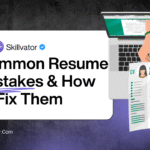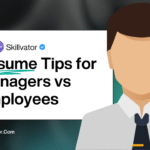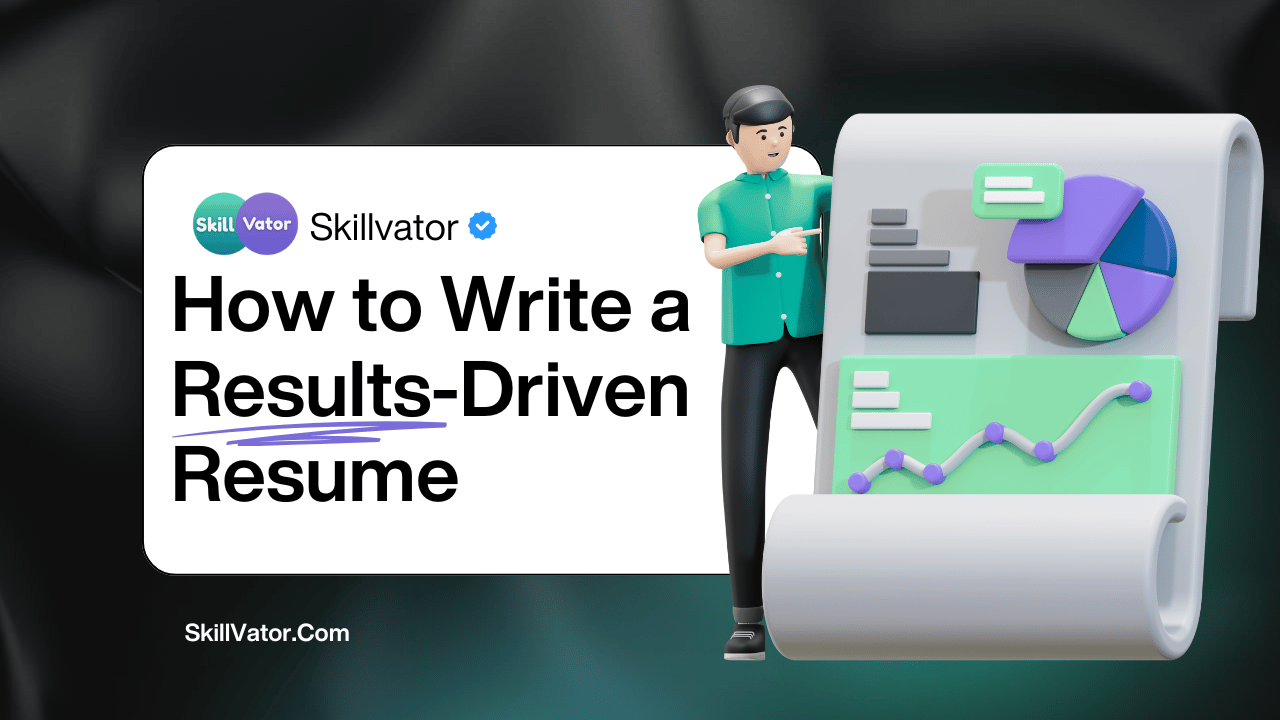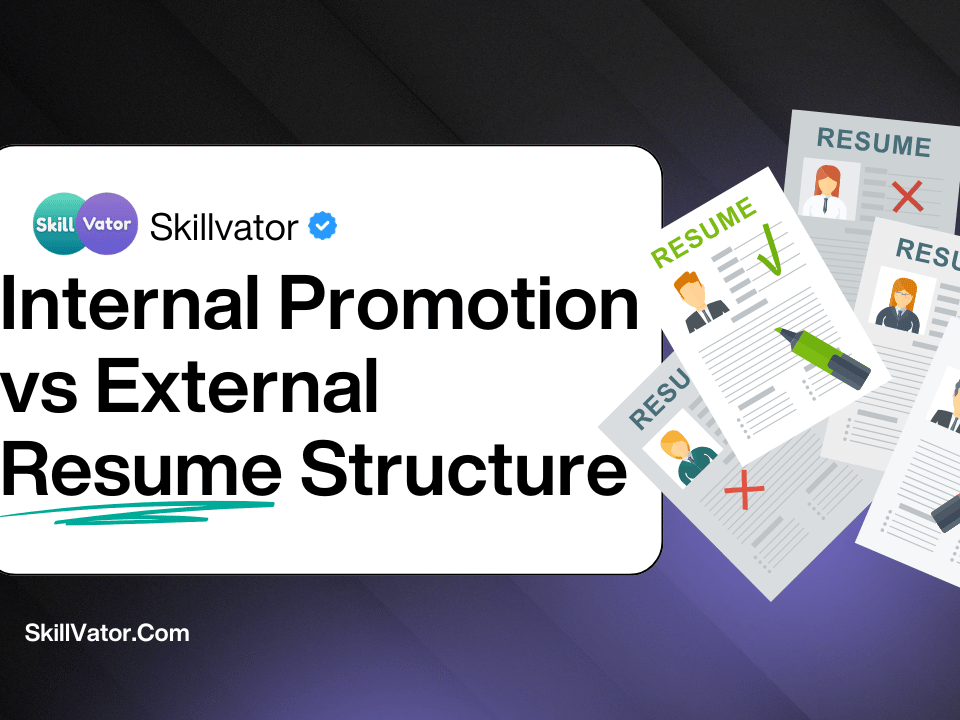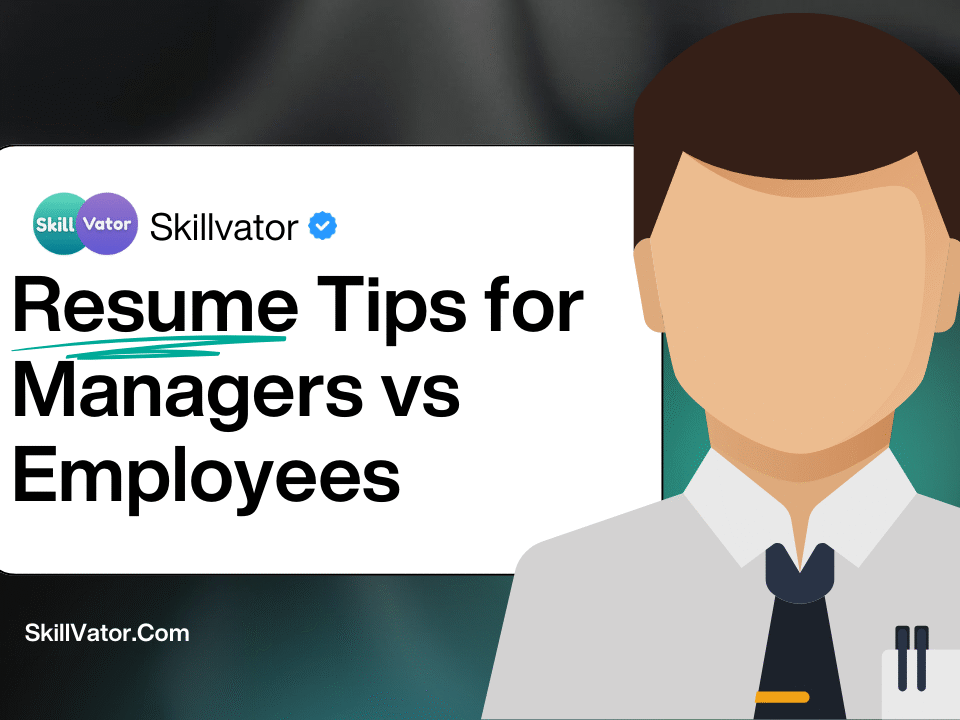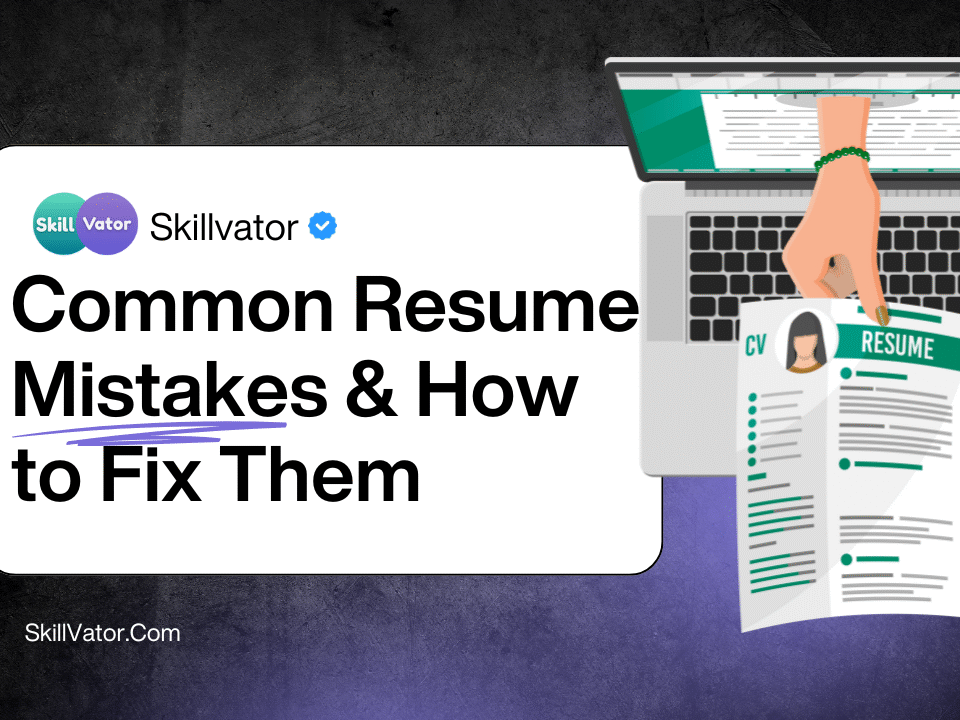Your resume is not just a list of jobs—it’s a strategic marketing document. In today’s competitive job market, a results-driven resume can help you rise above the noise, attract recruiters, and pass both human and AI screening systems.
At Skillvator, we help professionals turn static career histories into powerful, results-focused narratives that highlight real impact. This guide will walk you through exactly how to transform your resume from a responsibility-based list into a results-rich, opportunity-winning asset.
Why Results Matter More Than Responsibilities
Responsibilities tell an employer what you were supposed to do. Results prove what you actually achieved. Recruiters, especially in 2025’s competitive landscape, want proof you can deliver measurable value.
| Example | Weak (Responsibility) | Strong (Result) |
|---|---|---|
| Sales role | Managed client accounts | Grew client portfolio by 25% in 12 months, generating $500K in new revenue |
| Project manager | Led a software project | Delivered SaaS project 3 weeks ahead of schedule, saving $30K in operational costs |
Step 1: Start with the Right Mindset
Before writing, ask:
-
What is my core value to this role?
-
How can I quantify my impact?
-
Which achievements align with the job description?
Think like a recruiter—they’re scanning for ROI (Return on Investment).
Step 2: Use the STAR Method for Achievement Statements
The STAR formula—Situation, Task, Action, Result—is the easiest way to turn experiences into compelling, measurable points.
Example:
-
Situation: Company experiencing 20% churn rate.
-
Task: Reduce customer attrition.
-
Action: Introduced a loyalty program and automated follow-up emails.
-
Result: Churn reduced by 12% in 6 months.
Step 3: Optimize for ATS and AI
In 2025, Applicant Tracking Systems and AI resume screeners are smarter than ever, scanning for:
-
LSI keywords (career growth, leadership skills, process optimization, revenue growth)
-
Exact match job title variations
-
Skills grouped under standard headings (e.g., Skills, Technical Skills, Core Competencies)
Pro Tip: Mirror terminology from the job ad. If they say “stakeholder engagement,” use that exact phrase instead of “client communication.”
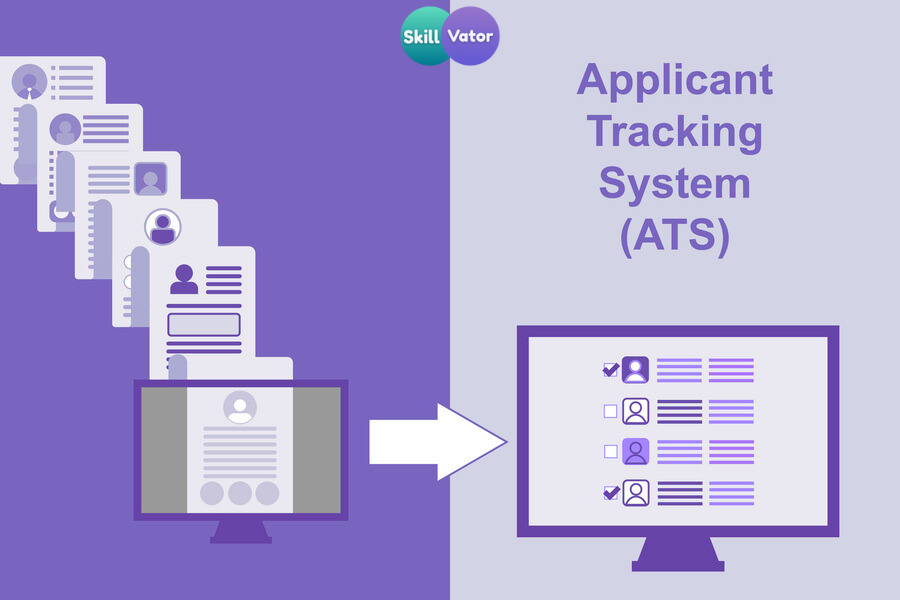
Step 4: Craft a Powerful Professional Summary
Your professional summary is the opening pitch of your resume. It’s the first section most recruiters see, and it can determine whether they keep reading or move on. In just 3–5 sentences, you need to communicate your core strengths, measurable achievements, and career direction—all tailored to the role you want.
A results-driven resume starts strong—your summary should be:
-
3–5 lines
-
Role-specific
-
Results-focused
Example:
Strategic marketing manager with 8+ years driving brand growth across SaaS and retail sectors. Increased qualified leads by 40% YoY and reduced cost per acquisition by 18%.
Why the Professional Summary Matters
-
Grabs attention fast – Recruiters spend an average of 7–10 seconds scanning a resume before deciding if it’s worth a deeper look.
-
Sets the tone – Positions you as a confident, results-driven professional.
-
ATS optimization – Allows you to include LSI keywords like career growth, project management, leadership skills, strategic planning, skills development, ensuring higher match scores.
How to Structure a Professional Summary
A strong professional summary should:
-
Start with your role and experience level
-
Example: “Senior Marketing Strategist with 10+ years in digital brand growth…”
-
-
Highlight 2–3 core competencies relevant to the job
-
“…specializing in content marketing, data-driven campaigns, and team leadership…”
-
-
Showcase measurable results or key achievements
-
“…increased qualified leads by 40% and reduced campaign costs by 18% year-over-year.”
-
-
Align with the employer’s needs
-
“…passionate about creating scalable marketing systems for high-growth SaaS companies.”
-
Examples of Results-Driven Professional Summaries
For a Project Manager:
Certified Project Manager with 8 years leading cross-functional teams in software and infrastructure projects. Delivered over 50 initiatives on time and 15% under budget. Skilled in Agile methodologies, stakeholder engagement, and risk management.
For a Sales Leader:
Results-driven Sales Director with a decade of experience in B2B SaaS. Grew revenue from $2M to $8M in three years through strategic account expansion and high-performance team coaching.
Common Mistakes to Avoid
-
Being too generic – Avoid clichés like “hardworking” or “motivated” without context.
-
Listing job duties – Focus on outcomes instead.
-
Writing too long – Keep it concise; this is a summary, not a cover letter.
Read the full guide: Common Resume Mistakes and How to Fix Them and start transforming your resume into a document that opens doors.
Step 5: Structure Your Experience Section for Impact
For each role:
-
Start with a results-first bullet
-
Include numbers (%, $, time saved, size of teams, project scale)
-
Follow with context or secondary achievements
Example:
-
Increased e-commerce sales by 22% in Q4 2024 by launching a data-driven remarketing campaign.
-
Reduced supply chain delays by 15% through vendor process improvements.
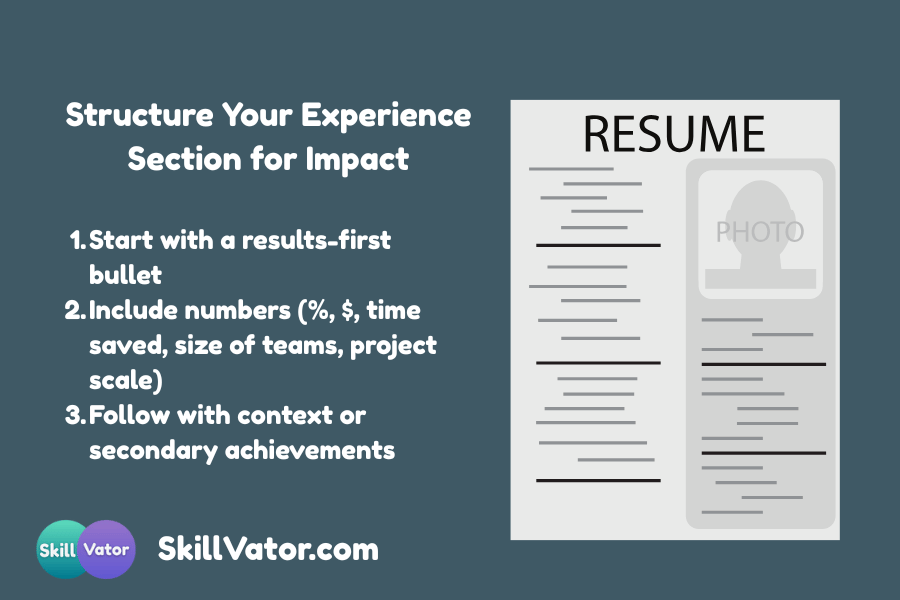
Step 6: Highlight Both Hard and Soft Skills
Hard skills prove technical capability. Soft skills show how you deliver results in real work environments.
| Hard Skills | Soft Skills |
|---|---|
| Data analysis | Leadership |
| SEO strategy | Adaptability |
| Financial forecasting | Problem-solving |
| Python programming | Cross-team collaboration |
Step 7: Use Tables and Bullets to Improve Readability
Recruiters skim. Formatting is part of being results-driven—it ensures your best achievements pop on first glance.
Example Bullet Layout:
-
Achieved top 5% customer satisfaction score across national branch network
-
Cut onboarding time from 3 weeks to 10 days via process automation
-
Secured $2M in grant funding for new sustainability initiative
Step 8: Add Geo Relevance if Targeting a Location
For geo-targeted roles, subtly weave in location references:
-
“Led regional sales expansion across Western Canada”
-
“Complied with EU GDPR standards for Berlin office operations”
This boosts local SEO relevance for recruiters searching by region.
Step 9: Keep It Concise (But Complete)
Your resume should be 1–2 pages—long enough to prove impact, short enough to be digestible. Cut anything that doesn’t support your target role.
Step 10: Proofread Like a Pro
Typos instantly reduce credibility. Use Grammarly or Hemingway, and ask a peer to review. At Skillvator, we also recommend reading aloud to catch awkward phrasing.
People Also Ask – Answered
How do I make my resume results-driven?
Focus on achievements with measurable outcomes—percentages, revenue gains, cost savings—rather than duties.
Should I include all past jobs?
No. Keep only relevant roles from the last 10–15 years that show impact.
Can I write a results-driven resume without numbers?
A: If numbers aren’t available, use qualitative results—improved team morale, enhanced customer experience, faster workflows.
Quick Checklist for a Results-Driven Resume
| Section | Must-Haves |
|---|---|
| Summary | Role-specific, measurable results |
| Experience | STAR method, metrics, action verbs |
| Skills | Balance hard + soft skills |
| Formatting | ATS-friendly, clean design |
| Geo Keywords | If applying to location-specific roles |
| Proofread | Zero typos, consistent style |
Read Choosing the Best Resume Format for Your Job Role | +5 Resume Templates to discover which structure highlights your strengths, fits your industry, and passes ATS checks—plus get 5 ready-to-use templates to start strong.
Final Thoughts from Raha Heydari
A results-driven resume isn’t just a piece of paper—it’s a proof-of-value statement. It shows employers not only what you’ve done but how well you’ve done it.
At Skillvator, I’ve seen time and again that small shifts—from duties to results, from vague to measurable—can dramatically increase interview requests.
Start by revisiting each bullet point in your current resume. Ask yourself: Does this show impact? Can I make it measurable? Once every section answers “yes,” you’ll have a resume that works as hard for your career as you do.

